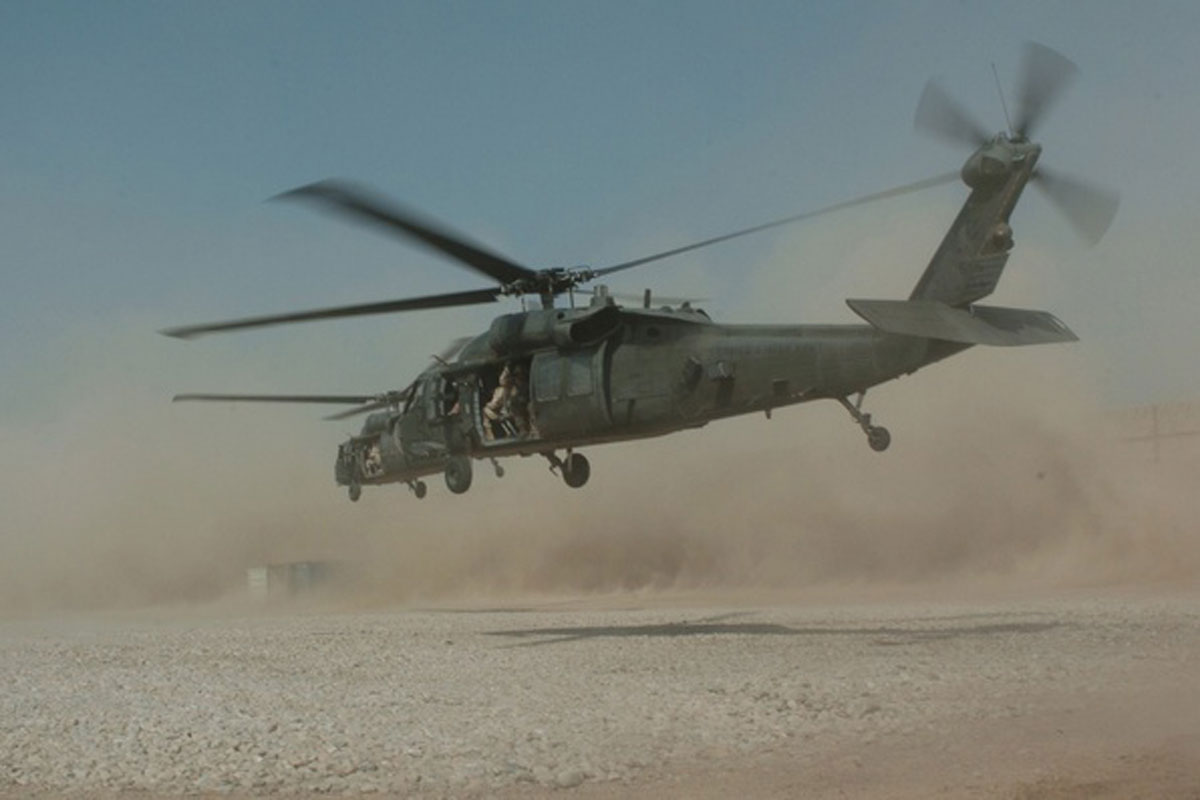UH 60 Helicopter Maintenance: A Comprehensive Overview for Pilots
UH 60 Helicopter Maintenance: A Comprehensive Overview for Pilots
Blog Article
Comprehending the Mechanics and Design Behind Uh 60 Helicopters
The UH-60 helicopter, generally understood as the Black Hawk, stands as a peak of contemporary rotorcraft modern technology, symbolizing a mix of robust engineering and intricate technicians. As we peel off back the layers of the UH-60's layout, a globe of complex systems and careful engineering comes to light.
History of UH-60 Helicopters
The background of UH-60 helicopters traces back to the late 1970s when the United States Military sought a sophisticated and flexible energy helicopter to replace its aging fleet. In reaction to this requirement, the Sikorsky Airplane Company established the UH-60 Black Hawk helicopter. Introduced in 1979, the UH-60 quickly came to be a staple in military procedures because of its remarkable capabilities.
The UH-60 was created to master a range of objectives, including army transportation, medical emptying, digital warfare, and special procedures. Its ability to adjust to various functions made it a beneficial asset to the united state Military and other army pressures around the globe
For many years, the UH-60 system has undertaken numerous upgrades and variants to boost its efficiency and keep speed with evolving objective needs. These helicopters have actually seen substantial service in disputes such as the Gulf War, Afghanistan, and Iraq, showcasing their reliability and adaptability in varied functional settings. The UH-60's rich history is a testimony to its long-lasting legacy as a premier energy helicopter.

Engine and Power Equipments
Using cutting-edge propulsion innovation, UH-60 helicopters are equipped with innovative engine and power systems to make certain ideal performance and dependability in an array of functional scenarios. The UH-60, typically recognized as the Black Hawk, is powered by two General Electric T700-GE-701D engines, each capable of providing up to 1,940 shaft horsepower. These turboshaft engines supply the needed thrust for the helicopter to execute its objectives efficiently, consisting of troop transport, clinical discharge, and combat assistance.

Blades System and The Rules Of Aerodynamics
How do the rotor system and the rules of aerodynamics of UH-60 helicopters contribute to their functional performance and trip capacities? The rotor system of the UH-60 helicopter plays an essential role in providing lift and propulsion.
The rules of aerodynamics also play a crucial role in the efficiency of UH-60 helicopters. The structured fuselage and blades blade design lower drag, permitting the helicopter to achieve higher speeds and much better gas effectiveness. The wind resistant style of the UH-60 also adds to its capability to operate in diverse ecological problems, consisting of hot temperatures and high elevations.
Avionics and Trip Control Equipment

In its intricate sychronisation with the blades system and aerodynamics of UH-60 helicopters, the avionics and flight control systems form a critical network of technologies shaping the aircraft's operational capacities. Avionics encompass the electronic systems made use of for communication, navigating, and keeping an eye on numerous airplane features. In the UH-60, these systems include digital display screens, communication radios, GPS navigation, weather condition radar, and auto-pilot systems. These avionics systems supply crucial info to the pilots, enhancing situational understanding and ensuring secure and efficient procedure of the helicopter.
The flight control systems of the UH-60 are accountable for converting the pilot's inputs right into the appropriate modifications to the blades system, ensuring stable trip and ability to move. These systems contain hydraulic actuators, servos, and computer systems that collaborate to control the main and tail blades, in addition to other trip control surface areas. By specifically managing the helicopter's trip characteristics, these systems make it possible for pilots to execute a variety of objectives, from transport and search-and-rescue to combat procedures, with accuracy and confidence.
Duty and Applications in Aviation
Avionics systems in UH-60 you could try this out helicopters incorporate a variety of electronic systems that aid in navigating, interaction, surveillance, and regulating different aircraft functions. These systems include digital displays, autopilot systems, communication radios, GPS navigating devices, and weather radar. Furthermore, these systems include security attributes such as autopilot settings, surface awareness warning systems, and security augmentation systems to enhance the overall safety and security and functional abilities of the UH-60 helicopters in various goals, including troop transport, medical emptying, search and rescue, and airborne firefighting.
Conclusion
In conclusion, the UH-60 helicopter is a flexible aircraft with an abundant history and progressed engineering. Its engine and power systems, rotor system, the rules of aerodynamics, avionics, and trip control systems all interact to make it a dependable and effective machine. The UH-60's read this article duty and applications in air travel are huge, varying from military procedures to browse and save missions. Its proceeded growth and usage demonstrate its significance in the area of aviation (uh 60).
In its complex control with the rotor system and aerodynamics of UH-60 helicopters, the avionics and trip control systems develop a crucial network of innovations shaping the airplane's functional capabilities.The flight control systems of the UH-60 investigate this site are liable for equating the pilot's inputs right into the proper changes to the rotor system, ensuring steady trip and ability to move. Avionics systems in UH-60 helicopters encompass a variety of digital systems that help in navigating, interaction, monitoring, and managing various airplane functions. In addition, these systems include safety functions such as autopilot modes, surface recognition cautioning systems, and stability enhancement systems to boost the general safety and security and operational abilities of the UH-60 helicopters in different goals, consisting of army transport, medical emptying, search and rescue, and airborne firefighting.
Its engine and power systems, rotor system, the rules of aerodynamics, avionics, and flight control systems all work together to make it a reputable and effective machine.
Report this page